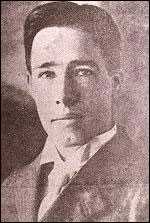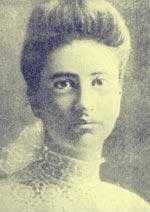Chester Gillette

Background
Gillette was born in Montana, but spent part of his childhood in Spokane, Washington. His parents were financially comfortable, but deeply religious, and eventually renounced material wealth to join the Salvation Army. The family traveled around the West Coast and Hawaii during his adolescence. Chester never took to the religious aspects of his upbringing. He attended Oberlin College's preparatory school on the generosity of a wealthy uncle, but left after two years, in 1903. After leaving school, he worked at odd jobs until 1905, when he took a position at an uncle's skirt factory in Cortland, New York.
Murder of Grace Brown

At the factory Gillette met Grace Brown, another employee. Gillette and Brown soon began a sexual relationship, with Brown assuming Gillette would marry her. In the spring of 1906, Brown revealed that she was pregnant. She continued to pressure Gillette to marry her, often writing him pleading letters. Brown then returned to her parents' home for a time, but returned to Cortland when she discovered that Gillette had been courting other girls. One popular tale featured a Miss Harriet Benedict, a wealthy acquaintance of Gillette whom the newspapers later speculated was the "other woman" for whom Chester had left Grace. Harriet heatedly denied this, even going so far as to issue a formal press release proclaiming: "I have never been engaged to Chester E. Gillette ... our acquaintance was of ... a limited duration and that not a word or suggestion was ever made between us (about an engagement)."[1]
As the spring and summer of 1906 progressed, others noticed an increasing frequency of Gillette's raised voice and Brown's tears at the factory or at each other's homes. Brown continued to press Gillette for some kind of decision, while Gillette played for time with vague statements about their future and of their going away on a trip sometime soon.[2]
Finally, Gillette made arrangements for a trip to the Adirondack Mountains in upstate New York. The pair stopped and stayed for a night in Utica, New York and then continued to Big Moose Lake in Herkimer County. At a nearby hotel, Gillette registered under a false name (although one that used his own initials, to match the monogram on his suitcase). He was carrying one suitcase and a tennis racquet. Brown at this point may have expected some kind of elopement ceremony.
On the morning of July 11, Gillette took Brown out in a rowboat on Big Moose Lake, where he clubbed her with his tennis racquet and left her to drown. He returned alone and lay low at his hotel. Later, witnesses would say that Gillette seemed calm, collected and perfectly at ease; nothing was amiss. Brown's bruised and beaten body was found at the bottom of the lake the next day. Gillette had done a poor job of planning the cover-up and was quickly arrested in nearby Inlet.
Trial and execution
The trial took place in Herkimer County and quickly drew nationwide attention. Gillette's defense attorney claimed that his client was innocent, that Brown had committed suicide and Gillette was a helpless onlooker to the suicide. The jury convicted Gillette of murder. The New York Appeals Court upheld the verdict and Governor Charles Evans Hughes refused to grant clemency or give a reprieve.[3] On March 30, 1908, Chester Gillette died in the electric chair at Auburn Prison in Auburn, New York.[4] The case was officially reported as People v. Gillette, 191 N.Y. 107, 83 N.E. 680 (1908).
In recent years
The television series Unsolved Mysteries aired an episode about the historical incident of Gillette and Brown in January 1996.
In 2007, Gillette's diary, which he wrote during the last seven months he was in prison, was donated to the Hamilton College Library by Gillette's grandniece. In addition to the diary, twelve letters written by Gillette during his time in prison were also donated. Eleven of the letters were addressed to Bernice Ferrin, a friend of the family who moved to Auburn, NY to stay with Gillette's sister Hazel. The twelfth letter, a farewell letter written the day before his execution, was addressed to Hazel Gillette. The diary and letters were published in December 2007, almost 100 years after the execution of Chester Gillette.
References
External links
- The Gillette-Brown affair
- Fatal Journey
- Find-a-grave: Gillette
- Chester Gillette and Grace Brown on CrimeLibrary